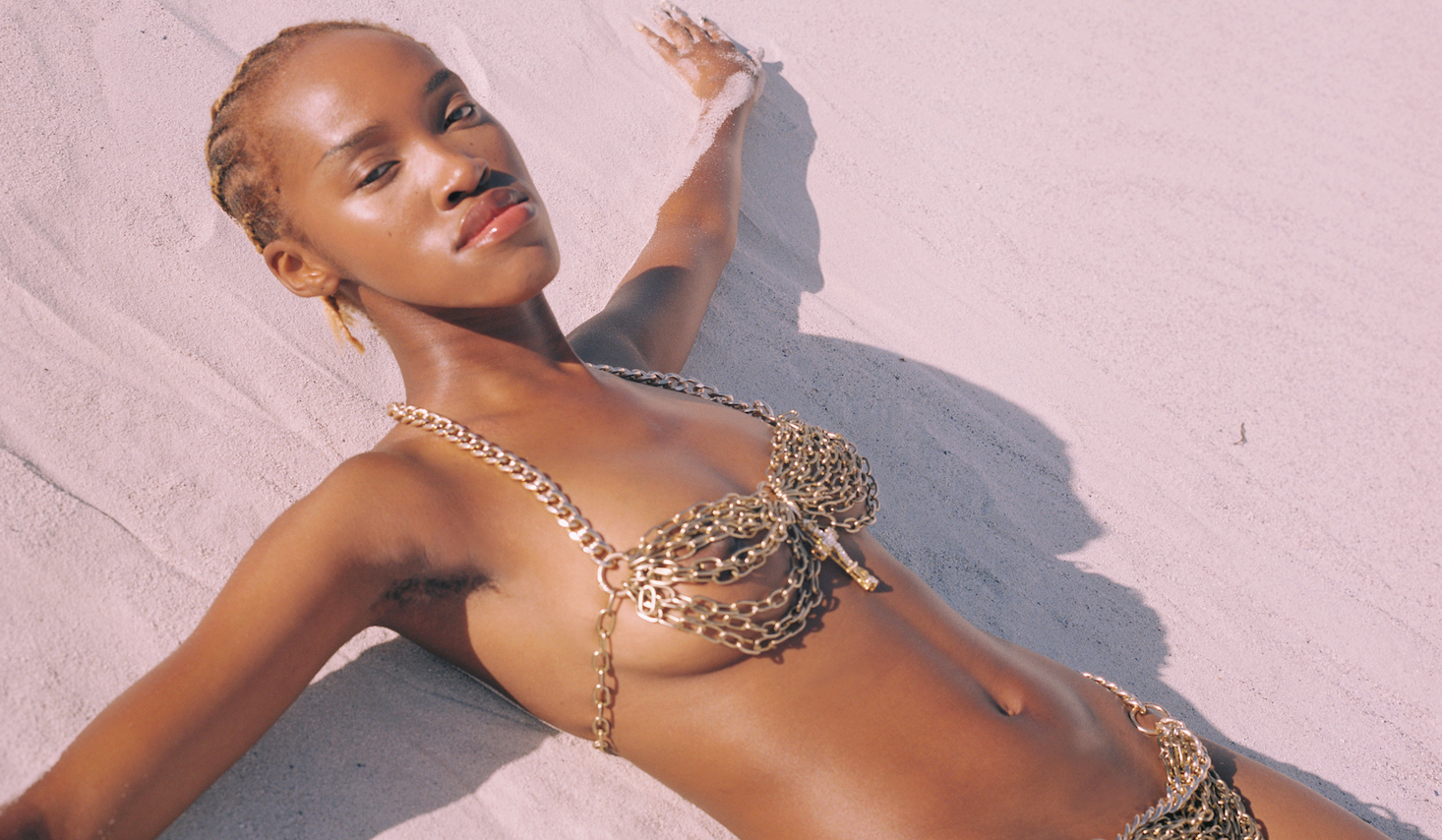
Welcome to Queer by Design, a new monthly column by GAY TIMES Contributing Editor Jamie Windust. Here, Jamie profiles emerging designers about the intersections of style, identity and expression and how these factors inform their creative practice.
Inspired by the heavenly imagery and iconography of the 15th and 16th centuries, designer Grete Henriette transforms bodies into ethereal, goddess-like beings. From Kim Petras and Sam Smith to Lil Nas X, her designs have drawn the eye of queer divas and pop icons alike.
After graduating from Ravensbourne in 2020 – debuting a graduate collection which drew on corsetry and Regencycore – she created her namesake brand, and developed a signature aesthetic. Transforming chains, rosaries, precious stones and crosses into intricate garments, her work lies somewhere between decadent jewellery and body armour. Henriette doesn’t just want to empower people to look fierce, she wants to instil in them an undefeatable sense of confidence.
Using the LGBTQIA+ community as a constant inspiration, Henriette’s work pays homage to the power that fashion holds for queer people and the transformative, affirming impact it can have in our lives. For her, creating fashion is a deeply personal act and, despite the worldwide appeal of her brand, her roots in the East London LGBTQIA+ scene will never leave her bones.
GAY TIMES sat down with Henriette to discuss the role the LGBTQIA+ community has played in her success and why she is determined to see queer bodies shine.
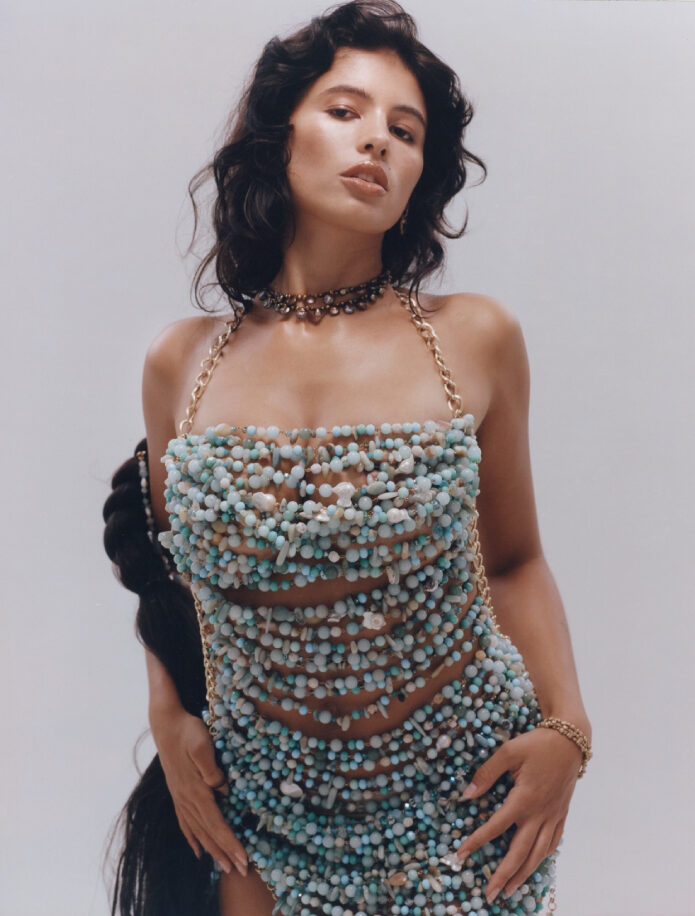
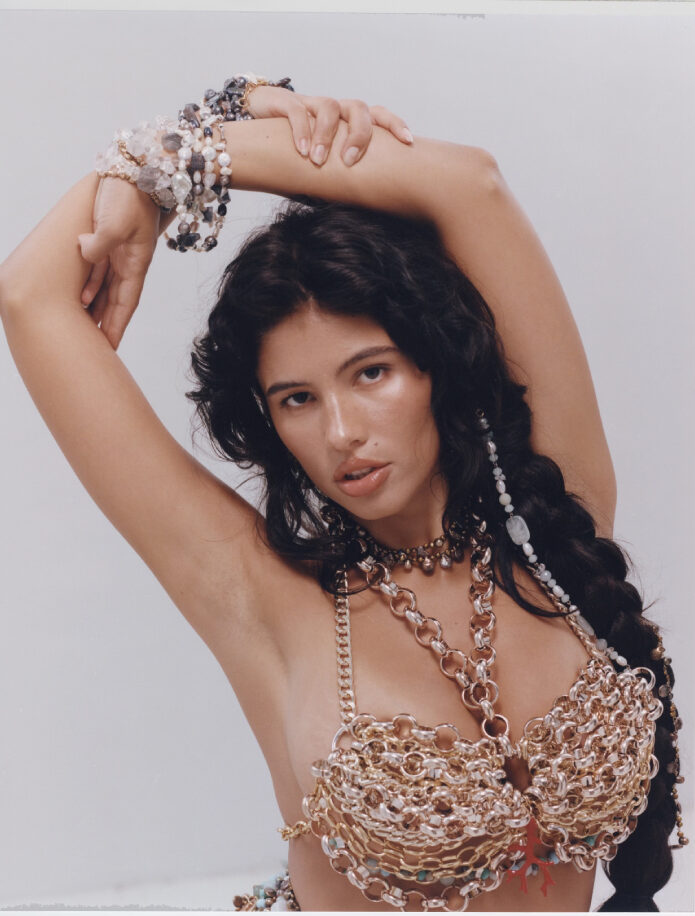
Let’s start at the beginning. I hear your creative background was in theatre before you went on to study fashion. How has that inspired your brand?
My background in theatre definitely laid the foundation for the aesthetic of my brand’s universe, and why my work can be quite theatrical and dramatic. I was attracted to theatre because it offers an opportunity to communicate and express oneself in a way that is imbued with passion that may lack in other art forms.
Both Fashion and theatre give me a space to express myself and my creativity. At the costume department of my acting course, I realised how interested I was in the construction of conceptual and historical pieces.
There’s an almost spiritual aspect to your work, using such chains and playing with natural light – where do you draw inspiration?
I’ve always been curious about the opulence we see throughout the history of Christianity. Religion was a big part of my upbringing and, like for most queer people, this relationship shifted when I realised I was queer. The gay panic when entering a church is still very real. Through my work, I aim to evoke a feeling of nostalgia through the composition of material, colour and imagery that show distinct familiarities to objects found in a Christian chapel. There is something so cunty yet heavenly soft about the art and fashion from the 15th and 16th Century.
I created the first ‘Saint Chain Dress’ as I was going through my antique jewellery box. I had been collecting antique pieces and rosaries for years. I wished to be able to only wear jewellery, wondering if it was possible for jewellery to become a garment. I started draping the pieces around my body, connecting the individual pieces to one another in the shape of a dress. That’s how it all started.
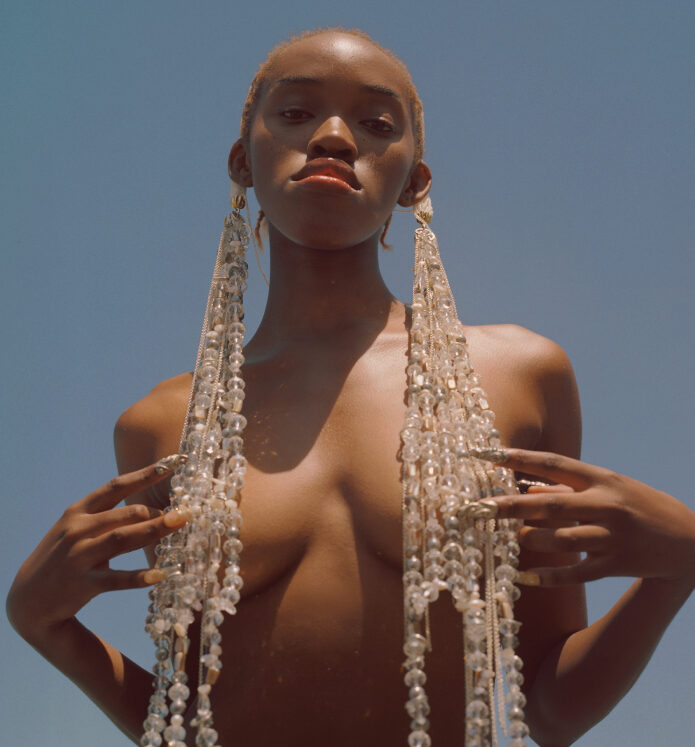
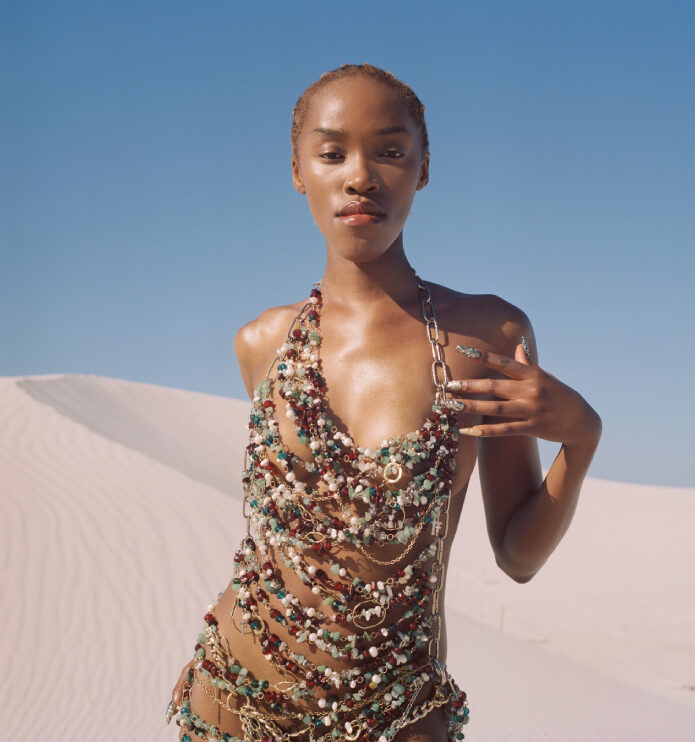
Your practice expands beyond design and into metalwork and stonework. How is your design process led by the materials you use?
At the moment my favourite material is mother of pearl. My entire algorithm is filled with videos of pearl farming and research on how it can be done sustainably, without harming the oysters. As an earth sign, I feel very connected to nature and its ability to create wonders.
Another recent obsession is natural rose quartz crystal and its healing properties. I’ve been creating looks entirely made with this beautiful stone. However, I do feel like I’m cheating on metal by saying this. Metal is such an essential part of my brand identity; I’ve always been inspired by historical armour and silversmithing. The craftsmanship, the time and attention to detail that goes into creating the pieces is incredible.
What I like most about the process is seeing how a hard, stubborn material transitions into an ethereal, almost angelic looking piece. That brings me so much joy. My favourite look is the ‘Physical Remains of a Saint’ mini chain dress. She is a mix of the materials I’ve mentioned, heavily embellished with colourful gems, pearls and unique antique jewellery pieces.
As an emerging designer how do you navigate expectations that the industry puts on young queer designers?
It can be stressful sometimes, you might get put in a box by some. People still see me as the ‘chain girl’ even if my work has become so much more versatile than that. But to be honest, I think this can also be the fun part of being in the ‘early stages’ of your career. There is a freedom to doing what you love, and most people are just excited to see where I’m going creatively, and see me and my brand grow.
As a member of the LGBTQIA+ community you’ve dressed Sam Smith and Kim Petras, what’s the best thing about being able to dress and work with fellow LGBTQIA+ creatives?
To me, it’s so rewarding to dress fellow queer artists, they get it. Especially, seeing someone feeling themselves, unapologetically embracing queerness covered in crystals, shining in opulence. We also just have the most fun because you know, we’re family.
Would you say that your brand is an extension of your queerness?
Absolutely. My creative process is very emotionally charged. It is how I express myself as an artist and a product of how I see the world. The queer scene in East London has played a big role in my journey and growth as an artist. The support and appreciation for our individuality, boldness and fearlessness, and the way we celebrate one another holds a big place in my heart.


